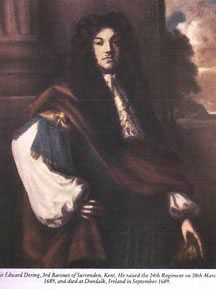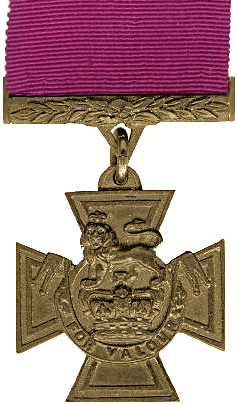|
Campbell Mellis Douglas
Campbell Mellis Douglas (5 August 1840, in Quebec City – 31 December 1909), was a Canadian recipient of the Victoria Cross, the highest and most prestigious award for gallantry in the face of the enemy that can be awarded to British and Commonwealth forces. The awarding of the VC to Douglas was one of the few (only six in number) instances of the VC being awarded for actions taken not in the face of the enemy. (Another instance with a Canadian connection was the awarding of the VC to Timothy O'Hea (an Irishman serving in the British army) for actions taken at Danville, Quebec in 1866 relating to Canada's defence against Fenian raids.) Douglas joined the British Army in 1862. Details Douglas was born in Quebec City to Dr. George Mellis Douglas and Charlotte Campbell. His father was a prominent doctor in Quebec and served as a Surgeon with the Royal Quebec Volunteers and Eastern Townships Loyal Militia during the Rebellions of 1837–38. His maternal grandfather was Archibald ... [...More Info...] [...Related Items...] OR: [Wikipedia] [Google] [Baidu] |
Quebec City
Quebec City is the capital city of the Provinces and territories of Canada, Canadian province of Quebec. As of July 2021, the city had a population of 549,459, and the Census Metropolitan Area (including surrounding communities) had a population of 839,311. It is the twelfthList of the largest municipalities in Canada by population, -largest city and the seventh-List of census metropolitan areas and agglomerations in Canada, largest metropolitan area in Canada. It is also the List of towns in Quebec, second-largest city in the province, after Montreal. It has a humid continental climate with warm summers coupled with cold and snowy winters. Explorer Samuel de Champlain founded a French settlement here in 1608, and adopted the Algonquin name. Quebec City is one of the List of North American cities by year of foundation, oldest European settlements in North America. The Ramparts of Quebec City, ramparts surrounding Old Quebec () are the only fortified city walls remaining in the ... [...More Info...] [...Related Items...] OR: [Wikipedia] [Google] [Baidu] |
The South Wales Borderers
The South Wales Borderers was a line infantry regiment of the British Army in existence for 280 years. It came into existence in England in 1689, as Sir Edward Dering's Regiment of Foot, and afterwards had a variety of names and headquarters. In 1782, it became the 24th Regiment of Foot, and had its depot in Warwickshire. Based at Brecon from 1873, the regiment recruited from the border counties of Brecknockshire, Monmouthshire, and Herefordshire. It was not called the South Wales Borderers until the Childers Reforms of 1881. The regiment served in a great many conflicts, including the American War of Independence, various conflicts in India, the Zulu War, Second Boer War, and World War I and World War II. In 1969 the regiment was amalgamated with the Welch Regiment to form the Royal Regiment of Wales. History Early history The regiment was formed by Sir Edward Dering, 3rd Baronet as Sir Edward Dering's Regiment of Foot in 1689, becoming known, like other regiments, by ... [...More Info...] [...Related Items...] OR: [Wikipedia] [Google] [Baidu] |
Canadian War Museum
The Canadian War Museum (CWM) () is a National museums of Canada, national museum on the military history of Canada, country's military history in Ottawa, Ontario, Canada. The museum serves as both an educational facility on Canadian military history and a place of remembrance. The museum building is situated south of the Ottawa River in LeBreton Flats. The museum houses a number of exhibitions and memorials, in addition to a cafeteria, theatre, curatorial and conservation spaces, as well as storage space. The building also houses the Military History Research Centre, the museum's library and archives. The Canadian War Museum was formally established in 1942, although portions of the museum's collections originate from a military museum that operated from 1880 to 1896. The museum was operated by the Public Archives of Canada until 1967, when the National Museums of Canada Corporation was formed to manage several national institutions, including the war museum. In the same year, t ... [...More Info...] [...Related Items...] OR: [Wikipedia] [Google] [Baidu] |
Battle Of Batoche
A battle is an occurrence of combat in warfare between opposing military units of any number or size. A war usually consists of multiple battles. In general, a battle is a military engagement that is well defined in duration, area, and force commitment. An engagement with only limited commitment between the forces and without decisive results is sometimes called a skirmish. The word "battle" can also be used infrequently to refer to an entire operational campaign, although this usage greatly diverges from its conventional or customary meaning. Generally, the word "battle" is used for such campaigns if referring to a protracted combat encounter in which either one or both of the combatants had the same methods, resources, and strategic objectives throughout the encounter. Some prominent examples of this would be the Battle of the Atlantic, Battle of Britain, and the Battle of France, all in World War II. Wars and military campaigns are guided by military strategy, whereas b ... [...More Info...] [...Related Items...] OR: [Wikipedia] [Google] [Baidu] |
Battle Of Fish Creek
The Battle of Fish Creek (also known as the Battle of Tourond's Coulée), fought April 24, 1885 at Fish Creek, Saskatchewan, was a major Métis victory over the Canadian forces attempting to quell Louis Riel's North-West Rebellion. Although the reversal was not decisive enough to alter the ultimate outcome of the conflict, it was convincing enough to persuade Major General Frederick Middleton to temporarily halt his advance on Batoche, where the Métis would later make their final stand. Battle Middleton, having led his Field Force out from Qu'Appelle on April 10, was advancing upstream from Clarke's Crossing along the South Saskatchewan River when scouts discovered an apparent ambush by Gabriel Dumont's Métis / Dakota force at Fish Creek, about south of Batoche. Fish Creek was Métis land. Upon learning that Middleton was marching toward Batoche, Dumont suggested to Riel the use of guerrilla warfare, by blowing up train tracks to slow their progress. Riel countered tha ... [...More Info...] [...Related Items...] OR: [Wikipedia] [Google] [Baidu] |
Valentine Munbee McMaster
Surgeon Valentine Munbee McMaster VC (16 May 1834 – 22 January 1872) was a recipient of the Victoria Cross, the highest and most prestigious award for gallantry in the face of the enemy that can be awarded to British and Commonwealth forces. Life McMaster was born in Tiruchirappalli in India and later graduated from the University of Edinburgh Medical School with an MD. He entered the army as an assistant surgeon in March 1855 and joined the 78th Highlanders, serving in the Persian War in 1857, before returning with the regiment to India at the beginning of the Indian Mutiny. Here, the 78th joined General Havelock’s column that advanced to relieve the siege of Lucknow. VC action McMaster was a 23 years old assistant surgeon in the 78th (Highlanders) Regiment of Foot (later The Seaforth Highlanders) during the Indian Mutiny when the following deed took place on 25 September 1857, at the first relief of Lucknow for which he was awarded the VC: McMaster was presen ... [...More Info...] [...Related Items...] OR: [Wikipedia] [Google] [Baidu] |
Thomas Murphy (VC)
Thomas Murphy VC true name Thomas Cosgrove (1832 – 22 March 1900) was an Irish recipient of the Victoria Cross, the highest and most prestigious award for gallantry in the face of the enemy that can be awarded to British and Commonwealth forces. Details The Cross was awarded not for bravery in action against the enemy, but for bravery at sea in saving life in a storm off Andaman Islands. Born in Dublin, he was about 28 years old and a private in the 2nd Battalion, 24th Regiment of Foot (later The South Wales Borderers), British Army during the Andaman Islands Expedition when the following deed took place for which he was awarded the VC. On 7 May 1867 at the island of Little Andaman, eastern India, in the Bay of Bengal, Private Murphy was one of a party of five ( David Bell, James Cooper, Campbell Mellis Douglas and William Griffiths) of the 2/24th Regiment, who risked their lives in manning a boat and proceeding through dangerous surf to rescue some of their comrades who ha ... [...More Info...] [...Related Items...] OR: [Wikipedia] [Google] [Baidu] |
William Griffiths (VC)
William Griffiths VC (1841 – 22 January 1879) was an Irish recipient of the Victoria Cross, the highest and most prestigious award for gallantry in the face of the enemy that can be awarded to British and Commonwealth forces. Details His VC not awarded for bravery in action against the enemy, but for bravery at sea in saving life in storm off Andaman Islands. Griffiths, born in County Roscommon, was about 26 years old, and a private in the 2nd Battalion, 24th Regiment of Foot (later The South Wales Borderers), British Army during the Andaman Islands Expedition when the following deed took place for which he was awarded the VC. On 7 May 1867 at the island of Little Andaman, eastern India, in the Bay of Bengal, Private Griffiths was one of a party of five ( David Bell, James Cooper, Campbell Mellis Douglas and Thomas Murphy) of the 2/24th Regiment, who risked their lives in manning a boat and proceeding through dangerous surf to rescue some of their comrades who had been ... [...More Info...] [...Related Items...] OR: [Wikipedia] [Google] [Baidu] |
James Cooper (VC)
James Cooper Victoria Cross, VC (September 1840 – 9 August 1889) was an England, English recipient of the Victoria Cross, the highest and most prestigious award for gallantry in the face of the enemy that can be awarded to United Kingdom, British and Commonwealth of Nations, Commonwealth forces. Details Cooper was about 27 years old and a Private (rank), private in the 2nd Battalion, 24th Regiment of Foot (later The South Wales Borderers), British Army during the Andaman Islands Expedition. The Cross was not awarded for bravery in action against the enemy, but for bravery at sea in saving life in a storm off the Andaman Islands. On 7 May 1867 at the island of Little Andaman, eastern India, in the Bay of Bengal, Private Cooper was one of a party of five (David Bell (VC), David Bell, Campbell Mellis Douglas, William Griffiths (VC), William Griffiths, Thomas Murphy (VC), Thomas Murphy) of 2/24th Regiment. They risked their lives in manning a boat and proceeding through dang ... [...More Info...] [...Related Items...] OR: [Wikipedia] [Google] [Baidu] |
David Bell (VC)
David Bell VC (c. 1845 – 7 March 1920) was born County Down, Ireland. Bell was a recipient of the Victoria Cross, the highest and most prestigious award for gallantry in the face of the enemy that can be awarded to British and Commonwealth forces. He was approximately 22 years old, and a private in the 2nd Battalion, 24th Regiment of Foot (later The South Wales Borderers), British Army during the Andaman Islands Expedition when the following deed took place for which he was awarded the VC. The VC was not awarded for bravery in action against the enemy, but for bravery at sea in saving life in storm off Andaman Islands. On 7 May 1867 at the island of Little Andaman, eastern India, in the Bay of Bengal, Private Bell was one of a party of five (the others being James Cooper, Campbell Mellis Douglas, William Griffiths and Thomas Murphy) of the 2/24th Regiment, who risked their lives in manning a boat and proceeding through dangerous surf to rescue some of their comrades who ... [...More Info...] [...Related Items...] OR: [Wikipedia] [Google] [Baidu] |



